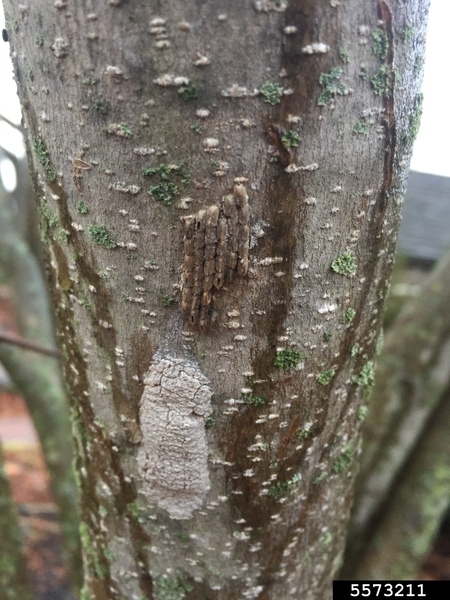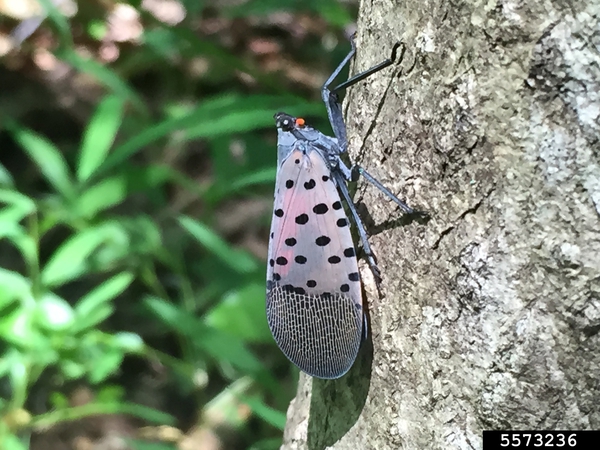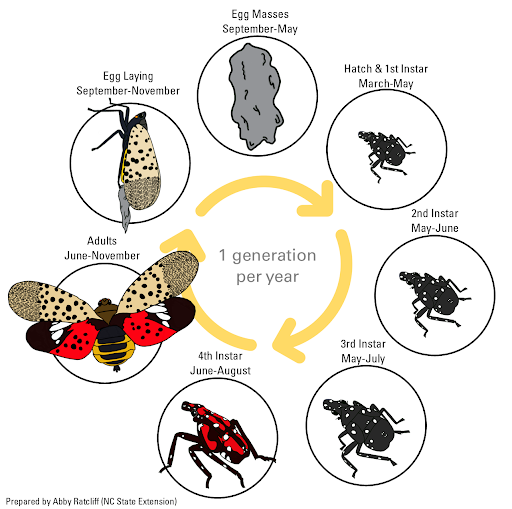Keep Your Eye Out for the Spotted Lanternfly
go.ncsu.edu/readext?1084646
en Español / em Português
El inglés es el idioma de control de esta página. En la medida en que haya algún conflicto entre la traducción al inglés y la traducción, el inglés prevalece.
Al hacer clic en el enlace de traducción se activa un servicio de traducción gratuito para convertir la página al español. Al igual que con cualquier traducción por Internet, la conversión no es sensible al contexto y puede que no traduzca el texto en su significado original. NC State Extension no garantiza la exactitud del texto traducido. Por favor, tenga en cuenta que algunas aplicaciones y/o servicios pueden no funcionar como se espera cuando se traducen.
Português
Inglês é o idioma de controle desta página. Na medida que haja algum conflito entre o texto original em Inglês e a tradução, o Inglês prevalece.
Ao clicar no link de tradução, um serviço gratuito de tradução será ativado para converter a página para o Português. Como em qualquer tradução pela internet, a conversão não é sensivel ao contexto e pode não ocorrer a tradução para o significado orginal. O serviço de Extensão da Carolina do Norte (NC State Extension) não garante a exatidão do texto traduzido. Por favor, observe que algumas funções ou serviços podem não funcionar como esperado após a tradução.
English
English is the controlling language of this page. To the extent there is any conflict between the English text and the translation, English controls.
Clicking on the translation link activates a free translation service to convert the page to Spanish. As with any Internet translation, the conversion is not context-sensitive and may not translate the text to its original meaning. NC State Extension does not guarantee the accuracy of the translated text. Please note that some applications and/or services may not function as expected when translated.
Collapse ▲Spotted lanternfly is an important pest to be on the lookout for in WNC! The spotted lanternfly, native to southeastern Asia, was found in Pennsylvania in 2014. Since then, this pest has spread across 18 different states across the mid-Atlantic, Northeast, and Southern U.S.. The first live population of spotted lanternfly in NC was found in Forsyth County near the border with Guilford County in June 2022, and in Reidsville (Rockingham County) and Lenoir (Caldwell County) in spring 2025. These are currently the only known populations of this pest in the state. So, why is this pest a threat, and what should we do to prevent its spread?
The spread, while it can occur locally via flight of the insect, is aided primarily through human assisted movement via artificial surfaces like cars, stone, wood, and other materials where egg masses can be laid. The species, originally from Asia, targets a wide range of woody plants and specifically threatens vineyards, orchards, nurseries, and landscapes throughout our area by feeding on the vascular tissue of plants. Damage caused by this pest includes the mass production of honeydew on plant stems (the excess sugar/sap that exudes from insect feeding), and gradual decline of the plant in question, including dieback and wilting.
FAQ
What should I do if I think I see a spotted lanternfly?
If you suspect that you have seen the spotted lanternfly, contact the NCDA directly using this online reporting tool. Please note that there are look-alikes in the landscape that could potentially look similar to instars and adults.
- Take photos of the insect in question! When taking photos, it is helpful to have a reference object to determine size (like a coin, pen, etc.)
- Note the location and date of the sighting, and the number of insects seen.
- If the insect gets away, take a photo of the location where you saw the insect.
What additional/preventative steps should I be taking now?
There are several things to keep in mind going forward to help prevent the spread of this pest:
- Take precautions while traveling! Inspect for egg masses on vehicles and belongings after you go through noted areas of infestation.
- Preemptively, remove Tree-of-Heaven from your property, especially if you are a vineyard or nursery operation. Research shows that spotted lanternfly preferentially favors Tree-of-Heaven for feeding, and egg laying. See the Tree-of-Heaven management/removal factsheet for more information.
- Spread the word! Be sure to let folks know what to be on the lookout for, and how they can take steps to prevent the spread of this pest.

Spotted lanternfly egg masses are covered with a substance that looks like dried mud (on lower section of tree). After hatching, individual eggs can be seen arranged in columns (cluster above the covered egg mass).
Photo credit: Emelie Swackhamer, Penn State University, Bugwood.org
Questions? Reach out to your local N.C. Cooperative Extension office and see the resources below.
Resources:
NCDA&CS Spotted Lanternfly- Stomp the Spread






